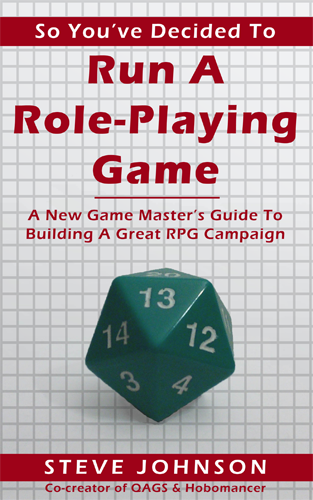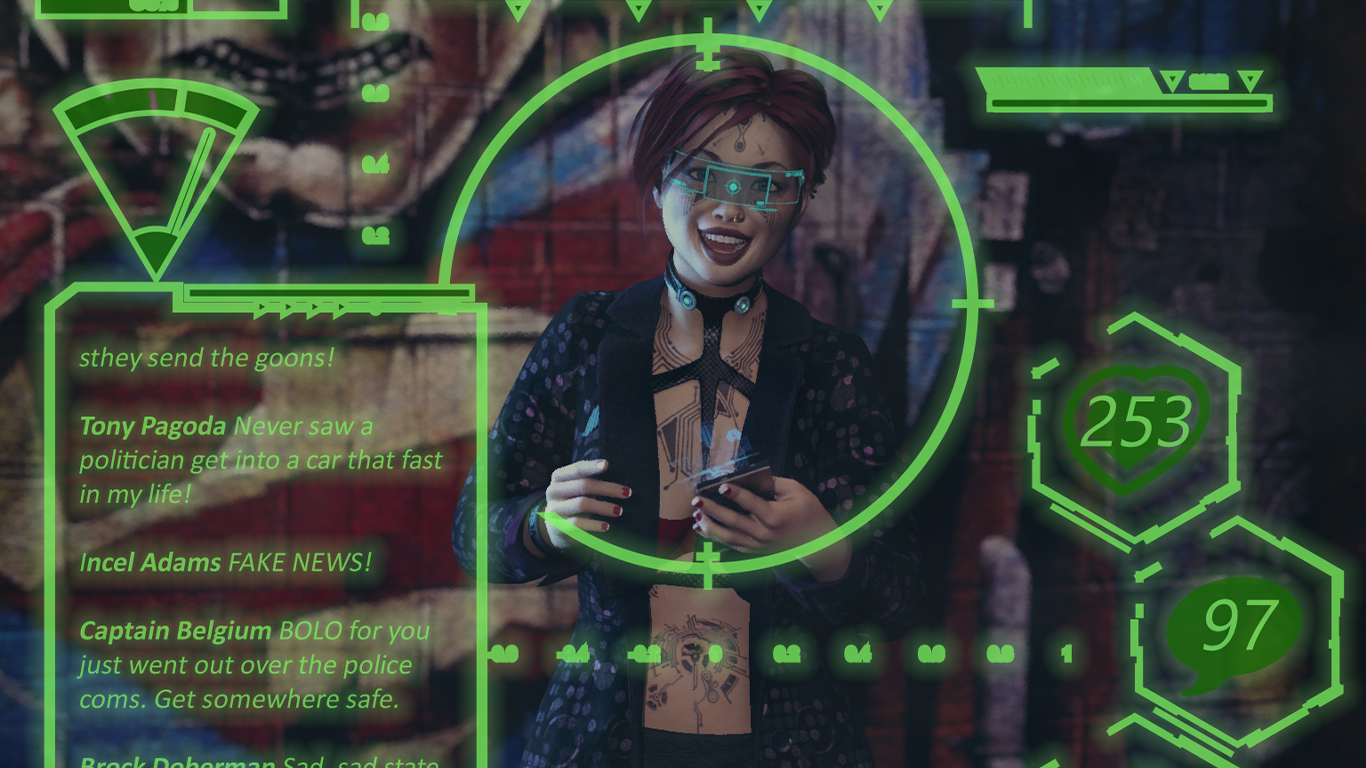We may earn money or products from the companies mentioned in this post.
My new book, So You’ve Decided To Run A Role-Playing Game, is on sale now. The PDF is available from Hex through the usual channels. Print and Kindle editions are available through Amazon . You should buy copies for all your friends and probably some strangers, too.
. You should buy copies for all your friends and probably some strangers, too.
Last week, I talked about some of the specific rules quirks of the first two editions of QAGS that I set out to fix when I started working on the 3rd Edition QAGS rules that ended up turning into a whole new game called Cinemechanix. This week, I’m going to talk about some of the broader design goals behind the new rules set. Actually, I’m just going to cut and paste them from an early version of the Q3E draft (from July 2014, based on the comment dates for this section of the document). These design goals were written up after I’d written and kinda-sorta playtested an initial draft of the new rules, so there are some game mechanics mentioned here that don’t exist in QAGS (some survived into Cinemechanix, some didn’t), but you don’t really need to understand them to get the gist.
[Editor’s Note: I apparently posted two different different versions of the Cinemechanix design goals. The gist is the same for both, but the explanations are different. You can find the other version here.]
Strong Central Mechanic
The basic procedure for determining Effect (formerly Success Degree) should be the same for every roll. Some rolls might have extra steps (like adding a bonus die or figuring up the bonus based on number of success for Gimmicks or subtracting a Difficulty), but there shouldn’t be any weird exceptions or radical changes to how you make the roll (in this situation you divide your Success Degreee by 4. In this one you add your bonus to the Success Degree instead of the target number, etc). After the Effect Number is figured out, what you do with it or how it’s interpreted may vary a lot from game to game and even character to character or situation to situation, but the basic way of arriving at it is more or less constant.
Strong Supporting Mechanic Concepts
These are things like Bonus and Penalty Dice or Hero Factor Bonuses. The idea here is that most situations that don’t have rules can be handled by applying an existing concept. If a character is chasing a bad guy on foot and one of them steals a horse, give the guy on the horse a Bonus Die–no need to try to figure out what kind of Speed Modifier a horse gives or whatever.
Cinematic
I almost think we need a different word here. In gamer-speak, “Cinematic” usually means “has rules for doing big action stunts.” And they’re often just as complicated and time-consuming as the rules for simulationist games like D&D. We do a little better than a lot of games because most of our “cinematicness” comes from YYs, which are very open ended. In the new edition, we need to try to apply the “the game models fiction, not reality” idea to all the rules. One example is doing away with things like Damage Bonus for weapons and Armor Ratings. In fiction, a character’s weapons and armor are usually just costuming. A naked oily Spartan with a name is going to beat the crap out of a heavily-armored Persian extra every single time, and Machete can kill you just as easily with his bare hands as he can with a machine gun. We included those in 2E because they’re something that games are supposed to have, but the only reason games have them is that the roots of gaming are based in military simulation, not storytelling. If a rule doesn’t have an obvious counterpart/example in fiction, there’s a good chance we don’t need that rule.
Adaptable
This is something we’ve talked about before as a different way of saying “generic” or “universal,” but I think it should actually mean something different. The best way I can explain what I mean is by example. A generic supers game says “Here are the rules for Super Speed. This is how your Super Speedster works.” An adaptable game says “Here is a toolbox of mechanics. Use them to define how your Super Speedster works. Another Super Speedster may work differently. That’s ok.”
Character Stats are Descriptive, not Defining
This is in part the “your character sheet is not an inventory, you can also do other stuff” idea, but also a “you don’t need to define every aspect of an ability” thing. Batman’s Gadgeteer Gimmick means he has a lot of crazy equipment. You don’t need to list it all out or inventory the capabilities of the Batmobile. If the GM doesn’t believe that Bats keeps shark repellent in his utility belt, he can make the player roll. Even if the roll is successful, that doesn’t mean Batman always has shark repellent. If the roll fails during the next sharknado, Bats forgot to replace it after he used it last time, or took it out to make room for a delicious peanut butter sandwich, or the shark repellent was in the beach vacation utility belt and right now Batman is wearing the underground survival utility belt. If Superman tries to use the X-Ray vision that was established a few episodes ago and the roll fails, he suddenly discovers that lead blocks the power, or he can’t use the power because there’s some kind of weird sunspot thing happening, or maybe there’s kryptonite in that box. It’s kind of along the lines of the Bonewitz quote from Magic Rules (“the universe is changing every millisecond and each ritual must be tailored to the specific situation at hand.”)–a good world is dynamic and there’s always a way to explain why something that worked before doesn’t work this time, so don’t worry too much about letting the player do new stuff with an ability “establishing” something that makes him “too powerful” (because game balance is a myth anyway).
Most of these core ideas survived through to the current draft of Cinemechanix, but the implementation of them has changed numerous times as the system has developed. Next week, I’ll talk about when the system stopped being QAGS 3E and became Cinemechanix.
I’m looking for pound notes, loose change, bad checks, anything. Gimme some money!







One thought on “Cinemechanix Design Journal: Design Goals”
Comments are closed.